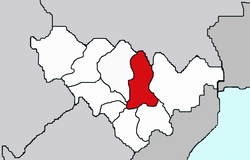Heilongjiang Province
Harbin, the capital of Heilongjiang, is one of China's biggest cities with nearly ten million urban residents. It is also dependent on the Songhua River for its water supply.
On November 21, the city government of Harbin announced that water supplies would be shut off at noon November 22 for four days for maintenance. Some residents of Harbin have complained that water in some parts of the city had been shut off much earlier than announced. The city also ordered all bathhouses and carwashes to close. At the same time as the enigmatic announcement, rumours ran wild about the possible cause of the shutoff, with some suggesting that an earthquake was imminent (causing some people to camp outdoors) and others claiming that terrorists had poisoned the city's water supply. The news of the shutoff caused panic buying of water, beverages, and foodstuffs in the city's supermarkets, while train tickets and flights out of the area were soon sold out. Meanwhile, dead fish were appearing along the banks of the Songhua upstream from Harbin, further compounding the fears of Harbin residents.
Later on the same day, the city government issued another announcement, this time explicitly mentioning the Jilin explosions as the reason for the shutoff. The four-day shutoff was postponed to midnight on November 24. From 9 a.m. to 8 p.m. on November 23, the city temporarily restored the water supply to allow residents to stock up on water, since the slick had not yet reached the city. In the afternoon of the same day, schools in Harbin were closed for one week. Also on November 23, Harbin residents began to receive water from fire trucks, and began voluntary evacuation.
The slick itself reached Harbin before dawn on November 24. On that day, the nitrobenzene level at Harbin was recorded at 16.87 times above the national safety level, while the benzene level was increasing, but had not yet exceeded national safety level. The nitrobenzene level doubled on November 25 (0.5805 mg/L), 33.15 times the national safety level, and began to decrease. The benzene level stayed under national safety level. At the same time, the tail of the slick left Zhaoyuan, Daqing, Heilongjiang. Premier Wen Jiabao of the State Council visited Harbin on November 26 to inspect the current situation, including the status of water pollution and water supply.
In response to the crisis, trucks transported tens of thousands of metric tons of water from surrounding cities, and thousands of tons of activated carbon from all over the country to Harbin. The government of Harbin also ordered the price of drinking water to be frozen at the level of November 20, in order to combat overpricing. In addition, Harbin is boring ninety-five more deep-water wells, to complement the existing 918 deep-water wells in the city. Fifteen hospitals were on stand-by for possible poisoning victims.
Harbin was not the only city to be affected. The slick passed through the city of Jiamusi, which, however, relies more heavily on underground water supply, and thus did not cut off water supplies. Nevertheless, on December 2, Jiamusi shut down its No. 7 Water Plant, which supplies around 70% of the city's water supply, and evacuated half of the population on its Liushu island.
It is reported that the entry of several tributaries into the Songhua, such as the Hulan River and the Mudan River, diluted the slick.
Water supply in Harbin was resumed in the evening of November 27.


